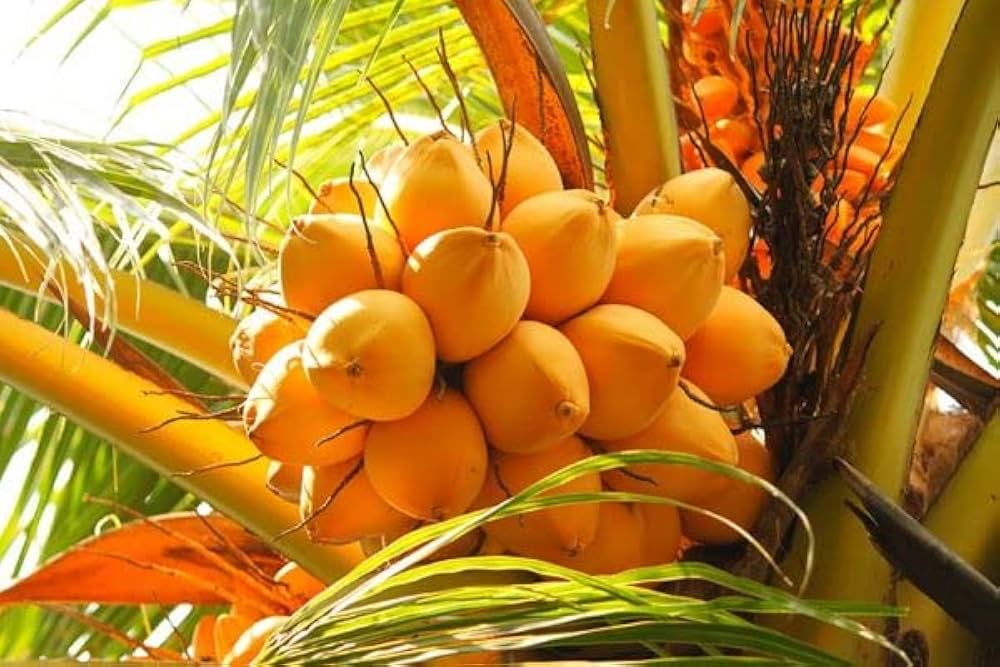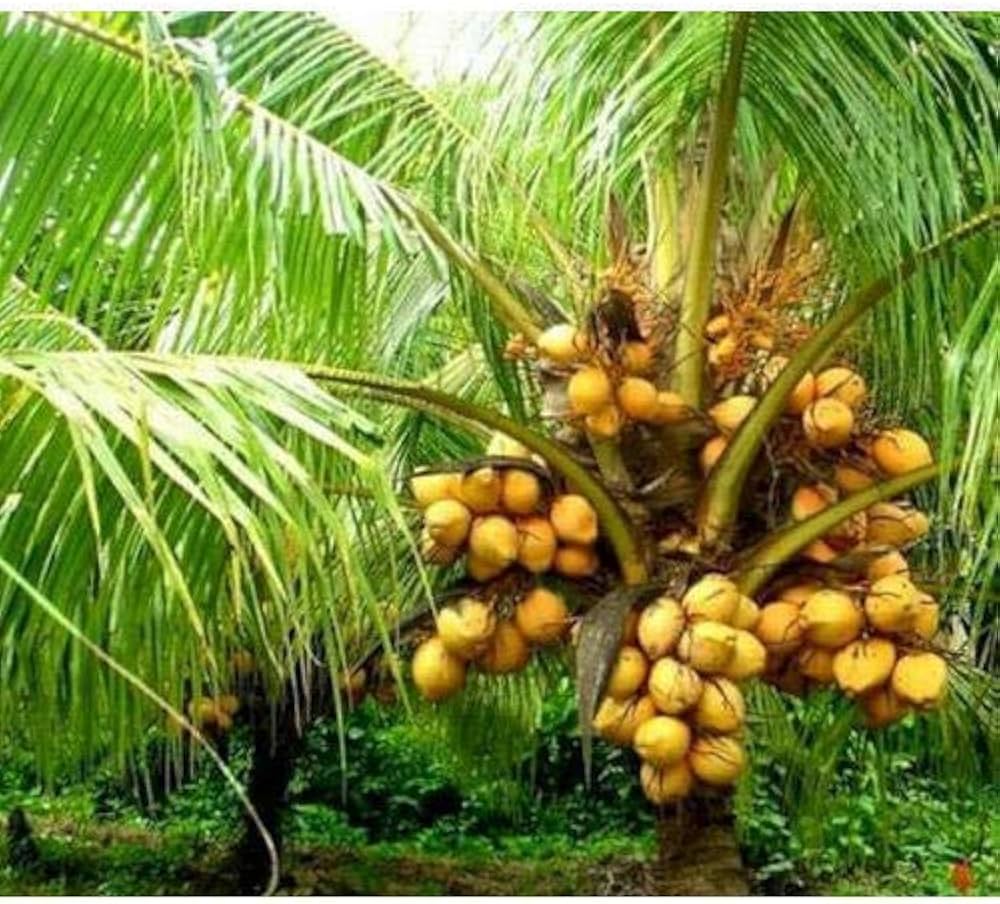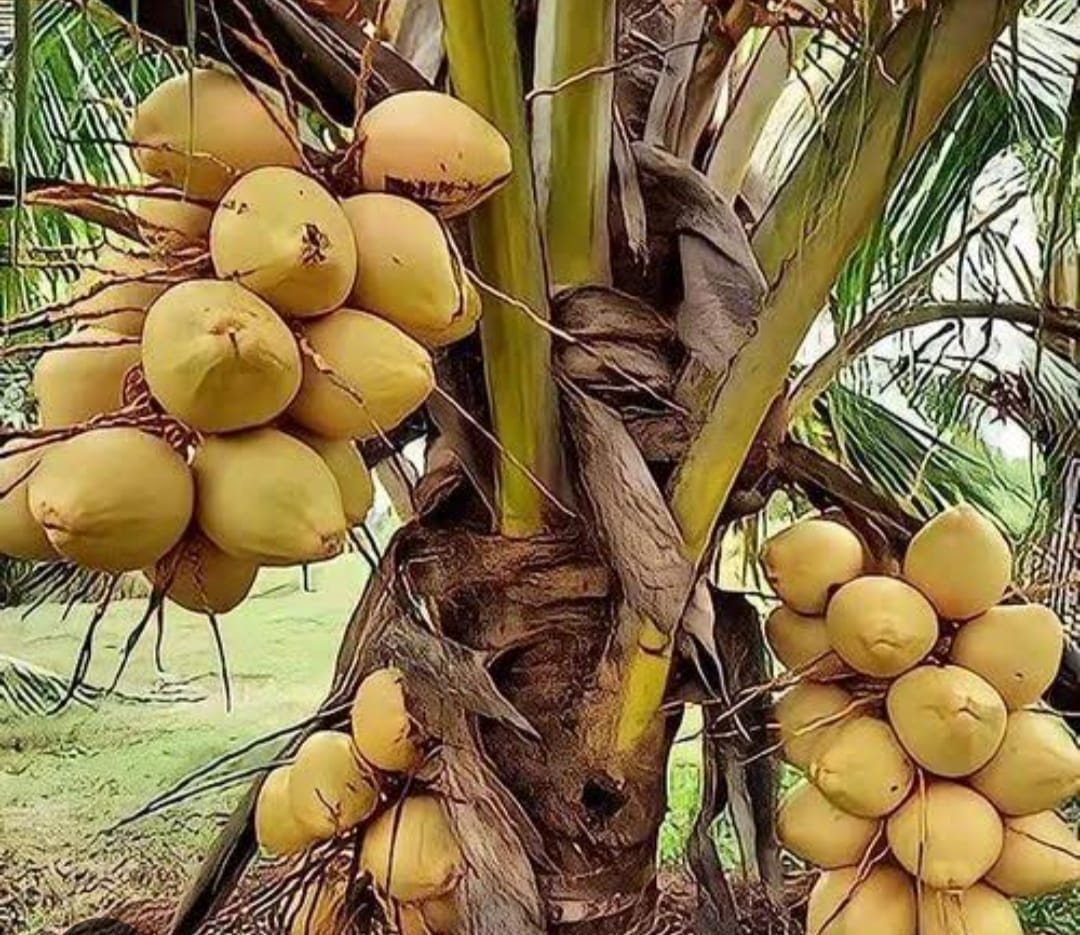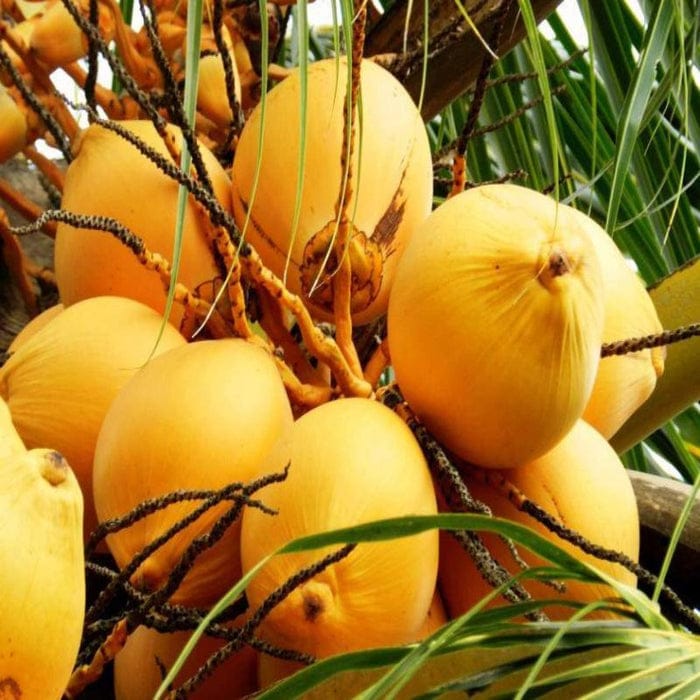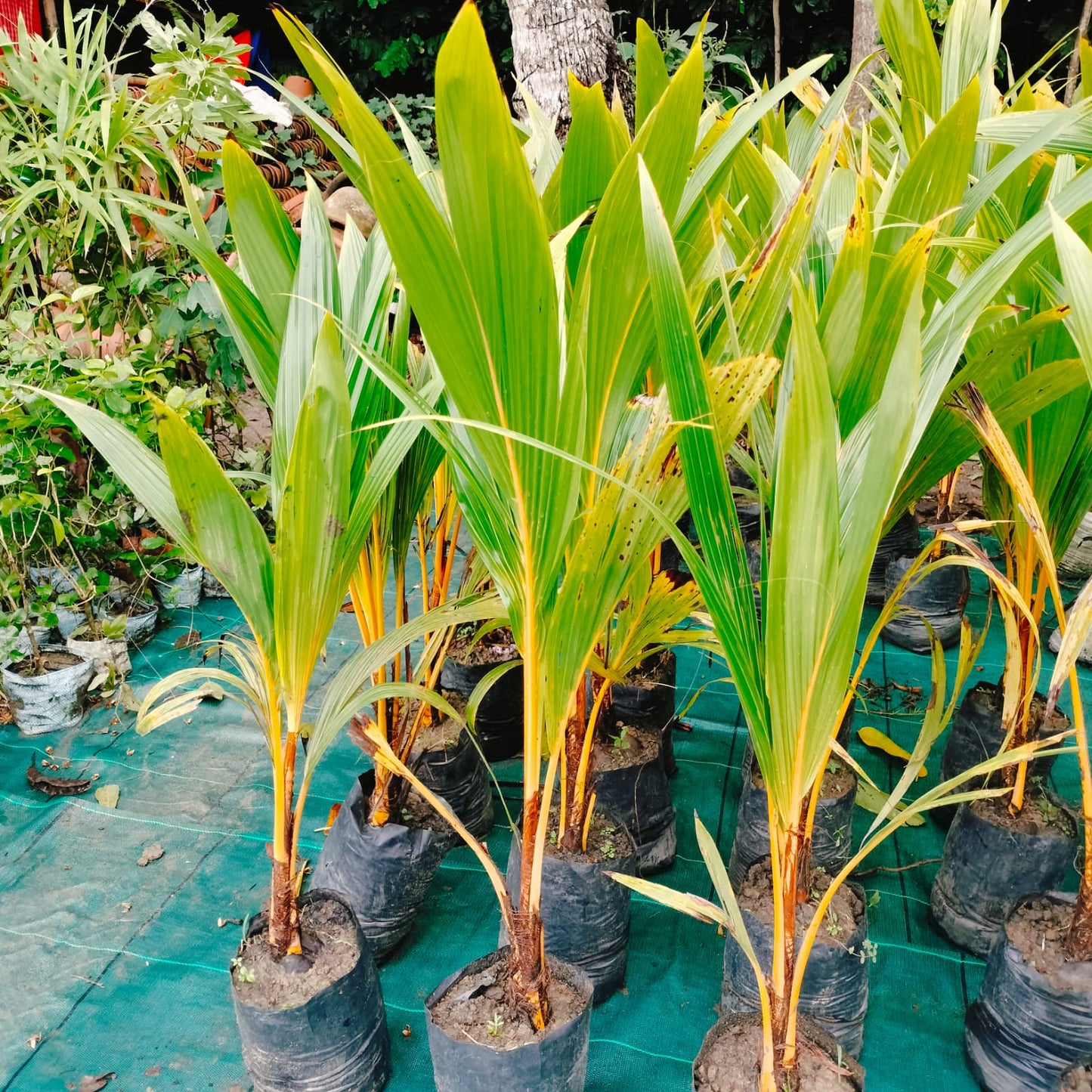Plantparadise
Thai Variety Coconut Plant|Thai Coconut tree delivery|Exotic Thai Coconut plants
Thai Variety Coconut Plant|Thai Coconut tree delivery|Exotic Thai Coconut plants
Regular price
Rs. 890.00
Regular price
Rs. 1,500.00
Sale price
Rs. 890.00
Unit price
per
Couldn't load pickup availability
Thai Variety Coconut Plant is a tropical palm known for its high-quality coconuts and aesthetic appeal. This variety is particularly valued for its sweet water and rich flesh, making it a popular choice for both commercial and ornamental purposes. Here’s a detailed description:
General Characteristics:
- Scientific Name: Cocos nucifera
- Family: Arecaceae
- Type: Tropical palm
Appearance:
- Trunk: The trunk is slender, smooth, and grayish-brown, often slightly curved. It typically has ring-like markings which are leaf scars.
- Leaves: The leaves are long, pinnate, and feathery, measuring 12-20 feet in length. They are bright green and arch gracefully from the top of the trunk.
- Height: Mature trees can reach heights of 50-80 feet, though dwarf varieties are shorter.
Coconuts:
- Fruits: The coconuts are typically medium to large, with a green to yellowish-green husk when young, maturing to a brown color. The inner shell is hard and contains the edible white flesh and sweet, refreshing coconut water.
- Water: Thai coconuts are known for their exceptionally sweet and abundant water.
- Flesh: The flesh is tender and flavorful, ideal for eating fresh or for culinary uses.
Growth Habits:
- Climate: Thrives in tropical climates with plenty of sunlight, humidity, and rainfall. It prefers temperatures between 75-85°F (24-29°C).
- Soil: Prefers well-drained sandy or loamy soil, with a tolerance for saline conditions.
- Watering: Requires regular watering, especially in the early stages of growth, but it’s also drought-tolerant once established.
- Propagation: Typically propagated from seeds (coconut seeds or sprouts).
Care Requirements:
- Sunlight: Needs full sun for optimal growth.
- Watering: Regular watering, especially for young plants. Mature plants are more drought-tolerant.
- Fertilization: Benefits from regular fertilization with a balanced palm fertilizer, especially in poor soils.
- Pruning: Minimal pruning required; removing dead fronds and old fruit clusters is usually sufficient.
Uses:
- Commercial: Widely cultivated for its coconuts, which are used for water, milk, oil, and copra (dried coconut flesh).
- Ornamental: Popular in landscaping for its tropical appearance and aesthetic appeal.
- Culinary: Coconut water, milk, and flesh are used in a variety of culinary dishes and beverages.
- Crafts and Construction: The husk fibers (coir) are used for making ropes, mats, and brushes. The leaves and wood are used in traditional construction and crafts.
Special Features:
- High Yield: Known for producing a high yield of coconuts, making it economically valuable.
- Sweet Water: The water from Thai coconuts is particularly sweet and refreshing.
- Adaptability: Can adapt to a variety of soil types and conditions, including coastal areas.
Benefits:
- Nutritional: Coconut water is hydrating and rich in electrolytes, while the flesh provides healthy fats and essential nutrients.
- Economic: A valuable crop for tropical regions, providing income and employment.
- Ecological: Contributes to coastal stabilization and provides habitat for various species.
Materials
Materials
Shipping & Returns
Shipping & Returns
Dimensions
Dimensions
Care Instructions
Care Instructions
